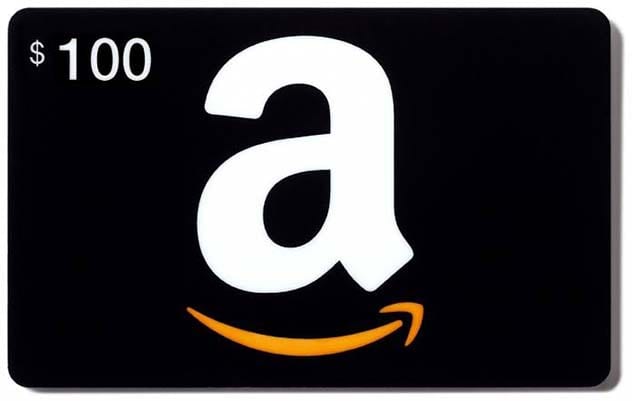 Crime
Crime  Crime
Crime  Technology
Technology 10 Hilariously Over-Engineered Solutions to Simple Problems
 Miscellaneous
Miscellaneous 10 Ironic News Stories Straight out of an Alanis Morissette Song
 Politics
Politics 10 Lesser-Known Far-Right Groups of the 21st Century
 History
History Ten Revealing Facts about Daily Domestic Life in the Old West
 Weird Stuff
Weird Stuff 10 Everyday Products Surprisingly Made by Inmates
 Movies and TV
Movies and TV 10 Actors Dragged out of Retirement for One Key Role
 Creepy
Creepy 10 Lesser-Known Shapeshifter Legends from Around the World
 Animals
Animals 10 Amazing Animal Tales from the Ancient World
 Gaming
Gaming 10 Game Characters Everyone Hated Playing
 Crime
Crime 10 Terrifying Serial Killers from Centuries Ago
 Technology
Technology 10 Hilariously Over-Engineered Solutions to Simple Problems
 Miscellaneous
Miscellaneous 10 Ironic News Stories Straight out of an Alanis Morissette Song
Who's Behind Listverse?

Jamie Frater
Head Editor
Jamie founded Listverse due to an insatiable desire to share fascinating, obscure, and bizarre facts. He has been a guest speaker on numerous national radio and television stations and is a five time published author.
More About Us Politics
Politics 10 Lesser-Known Far-Right Groups of the 21st Century
 History
History Ten Revealing Facts about Daily Domestic Life in the Old West
 Weird Stuff
Weird Stuff 10 Everyday Products Surprisingly Made by Inmates
 Movies and TV
Movies and TV 10 Actors Dragged out of Retirement for One Key Role
 Creepy
Creepy 10 Lesser-Known Shapeshifter Legends from Around the World
 Animals
Animals 10 Amazing Animal Tales from the Ancient World
 Gaming
Gaming 10 Game Characters Everyone Hated Playing
10 B.S. Myths We Believe Because Of Advertising
[This list has a competition! See the bonus item at the end for details.]
We here at Listverse are no strangers to myths that refuse to go away—we spend a lot of time debunking them! From the five-second rule to bats being blind, some of them are believed almost everywhere in the world, despite being so verifiably wrong. It’s not that all of us are dumb, it’s just that we refuse to look up anything online until it directly affects some aspect of our personal lives—a factor we see time and again when it comes to political debate: it’s just easier to remain ignorant and say “Ok boomer“.
SEE ALSO: 10 Things We Buy Only Because Advertisers Convinced Us To
While most myths are harmless reiterations of falsities we just don’t bother to correct, some of them owe their existence to slightly more sinister causes. Many ‘facts’ we believe about everyday things exist only because of concerted efforts by advertisers and corporations, all of which have little to no basis in scientific reality.
While Sigmund Freud was busy focusing on women and their penis envy, his possibly-less-well-intentioned nephew (Edward Bernays) was busy figuring out ways for faceless corporations to raid your bank account with your permission. Anyway, here are ten pervasive myths that exist entirely from the efforts of those seeking riches. Each item includes a fun related video so check them out too. It’s the weekend after all.
10 Diamonds
Diamonds are often sold as a woman’s best friend, even if we’ve never entirely been clear on what exactly that means. We are also led to believe that they are rare, which is what contributes to their high demand and price tag.
While there’s no doubt that diamonds are pretty and do have uses in many industries, they’re not actually all that rare. The only reason we believe that is because of a massive, decades-long advertising campaign by De Beers, which holds around 85% of the global diamond trade. Diamonds were rare at some point in time, though that all changed when Africa was colonized and massive diamond reserves found. Supply was no longer an issue, which meant that demand would soon drop, too. De Beers was essentially a group of influential diamond merchants who agreed to get together and form a monopoly instead of competing in a doomed industry. It has arguably been one of the most successful and persistent monopolies in man’s history.[1]
9 Sugar Vs. Fat
In 1968, George McGovern (Democratic senator for South Dakota, and Democratic Party nominee in the 1972 presidential election which was won by Richard Nixon) opened the “United States Senate Select Committee on Nutrition and Human Needs”. That committee ultimately decided (against the protestations of the American Medical Association) that “meat bad, bread good!” and launched the Human Obesity Crisis we suffer today.
The McGovern report—the committee’s wide-reaching set of reforms regarding public health and nutrition—identified all fat as the primary reason behind issues of malnutrition. But as it turns out, the sugar industry had a huge role to play in this report, as they deliberately paid scientists and ran huge advertising campaigns to get the spotlight on fat instead of sugar. We can’t say it didn’t work, as most of us believe that fat is worse for us than sugar, even if a lot of recent research on the subject squarely contradicts that. Thanks sugar lobby.[2]
8 Orange Juice Is Better
America is probably the only country in the world that overwhelmingly likes its breakfast along with a glass of orange juice. It’s popularly seen as a better alternative to the fruit itself, and many people even believe that it’s healthier. If you look at the fact that absolutely no other country is as crazy about orange juice as America, it understandably raises some questions.
If you dig into it, though, you’d realize that it’s because of advertising. The reason orange juice is unanimously considered to be better is because of an advertising copywriter working for the California Fruit Growers Exchange (later Sunkist) in the early 20th century. He had to come up with a campaign to make people buy more oranges, as cultivators were cutting down their produce because of worryingly low demand. He came up with the ‘Drink an orange’ slogan, and unsurprisingly, it worked. Hardly anyone in the country had orange juice before the ’20s, but by the early ’30s it had turned into the country’s second-most popular beverage.[3]
7Coca Cola And Santa
Coca Cola has been in news over the years for a wide variety of reasons; from their persistent-yet-adorable advertising rivalry with Pepsi to funding death squads in South America. Their biggest claim to fame, however, is coming up with Santa Claus. According to Coca Cola—and quite a few people who still seem to believe the myth—their Santa campaigns in the ’30s invented our favorite Christmas icon.
As it turns out, Coca Cola has as much to do with inventing Santa Claus as Nestle does with inventing water. Modern day Santa actually derives from many historical figures—mythological and real—and has seen many changes throughout the centuries with little to no help from Coca Cola. Moreover, a photo of Santa clad in red and white with the features we associate with him today, had already appeared in an issue of Harper’s Weekly around 40 years before the said campaign.[4]
6 Everything About Teeth
As long as you do all the things 9 out of 10 dentists recommend in ads, you should lead a life free of cavities and other dental problems. After all, it’s science, isn’t it?
In reality, though, we still don’t have a tight grip on what exactly to do to keep teeth perfectly healthy. You could floss and brush two times every day and still develop cavities like those who don’t do either. It’s not because dentistry is actually magic, but because there are so many things that can impact the health of the teeth that we don’t know about.
That hasn’t stopped pharmaceutical corporations from claiming that they’ve got all the solutions, though. Everything we believe about keeping our teeth clean from ads is actually an expert guess at best and actually harmful for your teeth at worst.
We still believe that aggressively brushing our teeth and removing the cavity-causing film on them helps reduce cavities, even though many studies have proven that most types of cavity-causing bacteria actually live in cracks and fissures. A healthy diet is a much better way to keep your teeth in shape than fancy toothpastes and innovative brushing techniques (thanks again Mr McGovern for screwing us on the sugar debate). Basically you are no worse off eating a big fat steak than using magical mystical toothpastes.[5]
5 Casual Fridays
No matter where you are in the world, if you work for a corporation, chances are that you need to wear formal clothes to work. That is, course, apart from the one day in the week you can wear casual clothes, which is usually Friday for most companies. Many team leaders believe that it affords their team some breathing room in an otherwise-rigid working environment, allowing them to be more creative and think outside the box.
While we’re sure that there may be some benefits, the reason so many bosses opt for casual Fridays is less because of an industry-wide concern for mental health and more due to an advertising campaign by Dockers in the ’90s.
You see, casual wear was a strict no-no at the workplace before that, though Dockers really wanted to sell their khaki pants to professionals. They came up with a huge advertising campaign to promote casual wear at the workplace, and even sent a ‘Guide To Casual Business Wear’ to around 25,000 HR managers (who, having nothing worthwhile to do, jumped on it), along with convincing the state government to adopt it for state-run workplaces. It was successful, and directly gave way to Aloha Fridays (the name for casual Fridays in many companies around the world). Because of its obvious popularity, Casual Friday was soon adopted by workplaces across America, and eventually the world.[6]
4 Coffee Is Bad
Depending on who you ask and which part of the world you’re in, the supposed harmful effects of coffee range from mild constipation to a horrific death. Many bloggers and health ‘experts’ strongly recommend staying away from it, as it apparently causes a variety of problems for the body.
Scientifically speaking, though, there are no studies that indicate that coffee has even the slightest adverse effects on health. On the contrary, growing research on the world’s most popular beverage is finding out that it actually has many benefits. The myth could be directly traced to anti-coffee advertisements by a beverage called Postum back in early 19th century, as it was trying to place itself as a viable alternative to it (which is a rather unlikely goal given our long history of absolutely loving caffeine and, frankly, the name “Postum”). As you can guess, it didn’t really work, but everything they claimed about coffee managed to stick around.[7]
3 Leaded Petrol
There are few cases that exemplify the sheer power and influence of the advertising industry than that of leaded petrol. As many of you may remember, it was considered to be an environmentally-friendly alternative to unleaded petrol for the better part of the 20th century. Even if most countries recognize its ill effects now and have banned it for the most part, it still survived as a product fit for public consumption for a ridiculously long time.
If you’re wondering how something as obviously harmful as lead can be seen as a good thing, the answer is the same as all other questions of similar nature; paying government agencies to publish favorable reports and good old advertising.
Nearly all the oil companies involved with the promotion of leaded petrol—as it’s cheaper to make and provides better performance—knew about its harmful effects on public health, though that didn’t matter much to them. They funded studies that placed leaded petrol as a better option to regular petrol, and managed to get it legalized by lobbying and sponsored research. They sustained the perception for so long through advertising, which was so effective that many older people may still instinctively look for the leaded sign at gas stations.
Because of Big Oil, lead is now an irremovable part of cities around the world (along with its impact on public health we’d never be able to accurately quantify), even if it has been phased out in most countries within the last twenty years or so.[8]
It is truly amazing what the media can convince people of these days. One list from the archives, 10 Insane Ways The Online Media Is Lying To You, looks at other ways this is happening right now.
2 Homeopathy
No matter how many people believe in it, homeopathy is still not scientifically proven to work in any way whatsoever. One huge Australian meta study clearly meant to settle the debate once and for all even looked at over 1,800 scientific papers on it, and concluded that yup, it definitely doesn’t work. Still, so many people around the world—and especially USA—believe that it does. How do we explain that?
In case you haven’t been paying attention to the rest of the list, the answer is advertising. Homeopathy is still perceived as a working alternative to modern medicine because of TV commercials and targeted online ads. The reason they can legally do that are manifold, including lax advertising guidelines for medical products (many countries ban medical advertising altogether for this reason) as well as regular healthcare being unaffordable for many. Additionally, low literacy rates and inaccessibility to medicine in the more unfortunate parts of the world add to the problem.[9]
1 Cold Beer Is Better
Different versions of this myth exist around the world, depending on where you are. Warm beer is popularly seen to be an inferior version of cold beer, and not just in terms of preference. Quite a few of us believe that cold beer doesn’t just taste better, but is also more hygienic and better for the body. While it should intuitively make sense—as higher temperatures are more hospitable for harmful bacteria and such—think about it a bit harder and you’d realize that all beer is equally sterilized in the can or bottle and hence hygienic, regardless of how warm it is. Moreover, there are no studies that suggest that cold beer is any different from regular beer, except being colder.
The real reason so many of us prefer our beer cold (even during a cold) is due to beer corporations consistently bombarding us with its benefits over warm beer in their advertisements—from getting more girls to being better at beach volleyball. We’re not entirely sure about the reason behind this endeavor, though, as it’s unclear how promoting cold beer is supposed to increase their sales beyond appealing to people on hot days.[10]
+ Competition

It has been a long time since we ran a Listverse competition and what list could be better for giving away a prize than a list on the evils of advertising? The grand prize is five $100 gift vouchers from Amazon.com to the commenters with the highest votes by 12:00am on Sunday the 10th (24 hours from the publication of this list). That should help get your Christmas shopping underway!
The only rules are that your comment must relate to this list. You can invite your friends to vote on your behalf—each comment has a “share” button, but your friends must be humans if you do . . . not robots! And of course you should also upvote other’s whose comments you particularly like. Downvotes are not counted. Moderators and the author of this list are excluded from entry. Anyone can enter regardless of country of origin. Good luck! P.S.: I’ve hidden a couple of little Easter eggs in the list. Can you find them?!
For more awesome lists like this, check out 10 Weird Sensory Marketing Tricks Companies Use On Us, and Top 10 Worst Marketing Gaffes Ever
About The Author: You can check out Himanshu’s stuff at Cracked (www.cracked.com/members/RudeRidingRomeo/) and Screen Rant (https://screenrant.com/author/hshar/), or get in touch with him for writing gigs ([email protected]).








